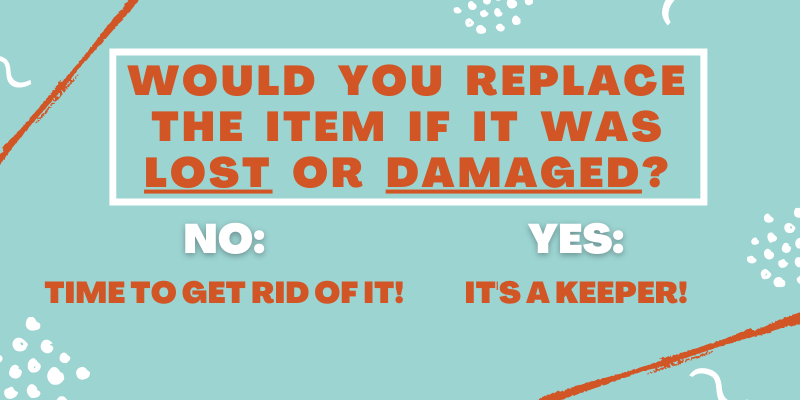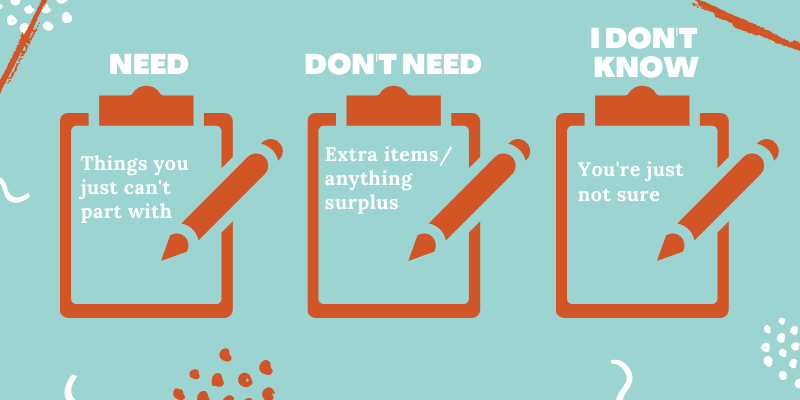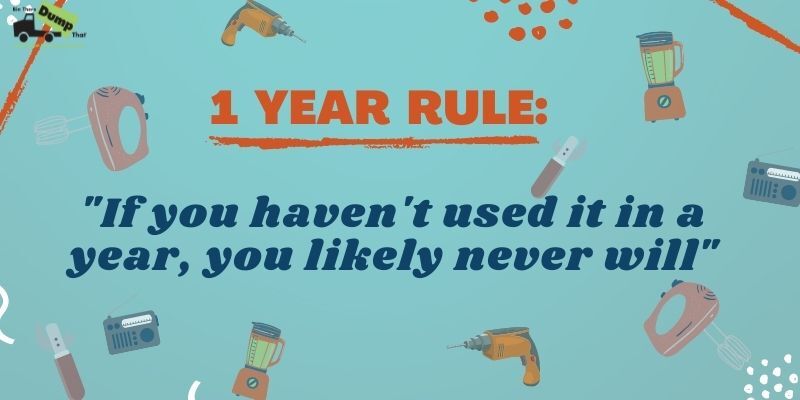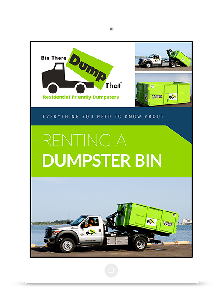How To Downsize Your Home In 10 Easy Steps

It doesn’t matter if you’re making space for relatives to move in, preparing to move into a smaller home, organizing for an estate sale or renting out your basement to a tenant - downsizing can be both time-consuming and stressful.
It doesn’t have to be though, if you tackle it with an organized and well-thought-out system.
But… Where do you start downsizing your home?
We’ve created an easy-to-implement ten-step approach on how to downsize your home and get ready for that next big step — whatever that happens to be.
We’ll start at the beginning, examining the sentimental journey you’ll take through the process and minimizing your belongings. This process will help you not only stress less but also help you save money in the process! Take a look at these 10 downsizing tips:
- Inventory and Honest Reflection
- Create a Pros and Cons List
- Minimize and Replace When Possible
- Always Consult Other Family Members As You Downsize
- Seek Outside Advice If Downsizing Is Taking Too Long
- Reducing Duplication as You Downsize
- It's Time To Implement The 1-Year Rule
- Cashing In On Valuables You No Longer Need
- Consider Donating When You Downsize
- Renting A Dumpster For Anything Left
Step 1: Inventory and Honest Reflection
We can’t stress enough how important it is to be organized when you start to downsize your home and free up new space. This step is the most important of all the downsizing tips because it sets you up for success in.
If you want to work through the process without the urge to pull out your hair in frustration time and time again, the best approach is to know exactly what you have in your home and which items are the most important to you.
Of course, this becomes even more crucial if you’ve been living in the same home for a number of years — in that time you can easily accumulate a lot of stuff and in many cases, you’ve probably forgotten where it came from and why you bought it in the first place.
So before you get rid of anything in your home, you should start with a complete item-by-item inventory.
This list should be comprehensive, including everything from the cutlery in your kitchen to the sentimental items, to the furniture in your living room. Don’t worry if this seems like an overwhelming task. Here's a pro tip: start in the kitchen where you’re less likely to run up against sentimental items. This makes it easier to find your groove before you move on to mor esentimental rooms like bedrooms.

Step 2: Create a Pros and Cons List
If you’ve created a full inventory list, the next step is to decide which items you should keep by examining what you value. One approach we find helpful is to look at your list and think about each item -- would you replace them if you lost them or if they were damaged? If the answer is no, you should add them to your downsize pile.
If you're still not quite sure about what to do with some of the things in your home, you're not alone. Getting rid of stuff in your house is hard work and it’s not always easy to be objective about the process. People everywhere struggle with the same conflicted emotions you are right now.
If you’re on the fence about some items, why not create a pros and cons list? On one side you’ll have things you just can’t part with or what we like to call the I Need It list. On the other side are possessions that are clearly just surplus or the I Don’t Need It list. Anything else you can temporarily store in your I Don’t Know List.

If you’re honest in creating these lists, you may be surprised with how many items actually end up on your I Don't Need It list. This may be difficult at first, but it feels good to make progress, doesn’t it?
Now it’s time to get really honest with yourself and take a long hard look at that I Don’t Know list-- which is often the hardest part to get through. By the time you’re through, there should be nothing left in this section of your lists — everything should either be in the I Need It List or the I Don’t Need It list.
Step 3: Minimize and Replace When Possible
For a lesson in why minimizing can be a good thing, think about how much easier it is to focus on one thing at a time.
If you want to tackle all of your yard work this weekend you might start by cutting the lawn — it’s easy, you don’t have to put a lot of thought into it and you can get started right away. Once you’re done with mowing the lawn, you can look at other tasks like creating a new flower garden, starting on that new deck or cleaning the swimming pool.
When figuring out how to downsize your home, you can use the same approach — look at one item at a time and think about how you use it. Do you need three couches in your new home or will one couch be more than enough?
Can you use that dining room table for multiple purposes such as dining and your home office? If you can, then you may want to serious consider getting rid of that extra bulky office furniture to reduce clutter as you downsize.
It’s also a good idea to take a close look at the size of things you’ll be taking with you. If you no longer need that king-size bed, consider selling it or donating it and replacing it with a queen or double.
You may still need certain items in your house, but that doesn’t mean you can’t replace them with smaller versions that make more sense as you downsize your home. Think about the quality of the item, what it would cost to replace it if necessary and whether or not the item is a sutainable solution for your home.

Step: 4 Always Consult Other Family Members As You Downsize
Some of the worst family disagreements start when a family member takes on a well-intended decluttering or downsizing project without consulting other family members. An item might not have a lot of value for you, but your spouse, parent or child may see things very differently.
It makes for a happier home if you include everyone in the process. That doesn’t mean there won’t be some disagreements or conflict, but things will go a lot smoother if you don’t toss everything that isn’t yours in the dumpster.
If your parents are moving in with you because of failing health or to be closer in case of emergency you may have two homes that you’re looking to fit into one. Not only that, but you have a couple more personalities and opinions to bring into the mix!
Figuring out how to downsize two homes into one can seem like a monumental task, but it will be a lot easier if everyone is involved. The process is the same through each step, it’s just that it includes more people.
With three of four adults to consult it may take a little extra time, so it’s important to start the process early. If you know that your parents will be moving in with you in a few months, start on your inventory lists today — that way things will go much more smoothly when the moving day arrives.
Step 5: Seek Outside Advice If Downsizing Is Taking Too Long
If you’re one of the lucky few that find the downsizing process straightforward, you should celebrate your organizational skills and willpower. There’s no need to get discouraged if you’re not one of these lucky few though.
For most of us, even if we’ve created great lists, been honest with ourselves and asked every family member for their input, we’re still probably going to find a few items we just can’t make a decision on.
The good news is, this is completely normal — parting with that ceramic frog collection can be one of the hardest decisions when you’re relocating and downsizing!
Your spouse may be just as in love with that ceramic frog collection as you are, but deep down you probably know it should be on the I Don’t Need List. Sometimes an outside opinion is just what you need to admit what you already know.
Talk to a family member or friend that doesn’t live with you about downsizing your home. They’re more likely to be completely objective with you than you probably will be with yourself. Chances are, they’ve been wondering why you haven’t already moved on from the ceramic frog collection already!
If you're a senior citizen, you should especially think about reaching out for help. Downsizing for seniors may be a necessary part of life, but that doesn't make it an easy one. It's not easy letting go of a lifetime of memories, so the quicker you can get started with a trusted friend or family member, the more prepared you'll be to make the right decisions for yourself and your loved ones. You may even be eligible for seniors discounts on things you need along the way, such as hiring a moving company or renting a dumpster for easier trash removal.
Step 6: Reducing Duplication As You Downsize
Have you ever looked in your cutlery drawers and wondered why you have four can openers or three spatulas?
Realizing you have too much of one item is a common experience-- every homeowner has a tendency to buy one too many of something if they stay in the same home for a few years.

You may have liked the color of your second spatula, or perhaps your old can opener wasn’t working as well as it should so you bought a replacement — that makes perfect sense.
The problems start when we forget to throw out the older items we no longer need. This happens all the time in just about every household.
If you have three cordless drills it’s time to decide which one you like the most and consign the rest to the dumpster.
No one wants to be considered a hoarder, but we all have a little bit of one in us and we realize that when we discover that we have duplicates of many common household items.
If you’re wondering how to downsize your home, parting with duplicates is a great place to start. You'll be surprised about all the new space you have.
Step 7: It's Time To Implement The 1-Year Rule
If you’ve gone through our process up to this point, you’re probably almost done with your downsizing project, but there may still be some lingering items that have you stumped.
There is one more approach that may help with those final few items you just haven’t been able to categorize yet: The 1-year rule.
The 1-year rule says that if you haven’t used something for at least a year then there’s a good chance you never will.

Even if you think that you may need it somewhere down the line, you can probably buy a replacement in the future when you do really need it. For now, let it go.
You may also want to consider giving it to a friend or family member with the stipulation that you’ll be able to borrow it if you ever need to. Bottom line is, that item you're holding on to that hasn't been touched for well over a year? It's time to let it go.
Step 8: Cashing In On Valuables You No Longer Need
If you’ve arrived at the point where you’re ready to start physically clearing your home of all the things you no longer need, you've gotten through the worst of it! The emotional labor and stress that comes with decluttering and downsizing is often the biggest hurdle.
It’s a big job and you should give yourself a big pat on the back before considering the next steps in how to downsize your home.
So now that you know what you want to part with, what do you do with it? Do you sell it, donate it or toss it out?
Selling unwanted items can be a great way to pay for your move if you’re relocating — especially if you’re giving up collectibles that others may find valuables.
There are lots of ways to sell your items whether it be a garage sale, Craigslist, Facebook Marketplace, Kijiji, or Ebay and most of them are easy to use.
If you want to sell an item online and you’re not sure how to go about it, don't be afraid to reach out to someone you trust for support-- chances are you have a friend or family member who can help.
Step 9: Consider Donating When You Downsize
Not everyone wants to go through the trouble of selling used items online or organizing a garage sale.
Selling yourself can be time-consuming and you may be tempted to toss things in the dumpster even if they offer real value to someone else. For many household items there’s an easier way to declutter and downsize without throwing out furniture, old beds, or other items that might help someone else.
Donating household items is a great way to get your old things out of your way and do something worthwhile that will make you feel good about yourself at the same time.
There are many great organizations such as The Restore, The Salvation Army and Goodwill that will come right to your home for large items such as mattresses and kitchen cabinetry, so that you don’t have to worry about the logistics.
Donating gently used items is a win-win for everybody involved.

Step 10: Renting A Dumpster For Anything Left
There’s a sense of relief that hits you when you’ve sold everything that you no longer need or donated to a charitable organization.
If you’re lucky, that means you’re finished with your downsizing project and you can concentrate on your move to your new home or moving your loved ones in.
In some cases you may still have a lot of unusable junk left to deal with though. It’s amazing how many garages and basements are filled with stuff that outlived its usefulness years ago! One of the easiest ways to deal with these unwanted items is to rent a dumpster.
When you rent a dumpster you’ll have it in your driveway whenever you need it.
All you have to do is move the junk from your garage or basement into the dumpster in your driveway. You usually have the dumpster for a full week so there’s no need to rush, you can pace yourself and make sure you clear out everything you need to.
Best of all you don’t have to worry about the disposal — that’s taken care of for you.
Book your Residential Friendly Dumpster today!
Friendly, professional customer service, plus fair pricing, equals value.


